Monitoring and Alerts
Introduction
Monitoring your cloud resources is critical to ensure availability of the resources and be in a position to take proactive actions before failure scenarios occur. CoreStack helps in automatically configuring monitoring metrics in your cloud native monitoring mechanisms (such as Amazon CloudWatch, Azure Monitor) for all your resources. What's more, you will also get alerts from CoreStack when the set thresholds are exceeded.
This section handles the configurations associated with managing monitoring & alert rules for cloud resources.
CoreStack helps with automated configuration of alerts in your native cloud monitoring and issues alerts in scenarios where set threshold limits are exceeded for the associated cloud account. Let us take the example of CPU Utilization. You can set an alert stating that a CPU Utilization above a threshold limit of say, 90%, is to be flagged. This alert will be sent as an email to the configured mail addresses.
You can create alert rules for one or more specific resource activities with preferred threshold limits.
Navigation
Click on Operations in the Left navigation menu and select Monitoring & Alerts option to land in Monitoring Services – Alert Rules screen.
Creating a New Monitoring Template
- To create a new monitoring template, click on the “Create” button as shown in the below picture.
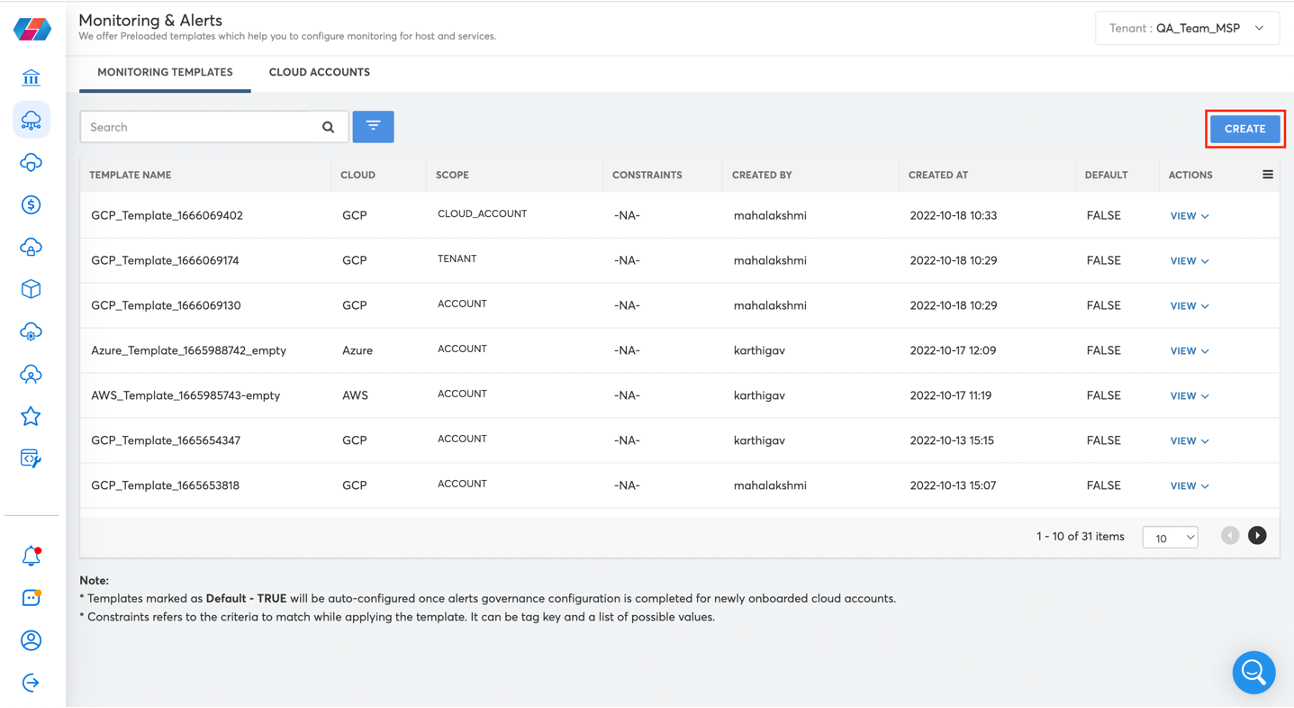
- After the “Create“ button is clicked, the below screen would be displayed to enter the details of the new template
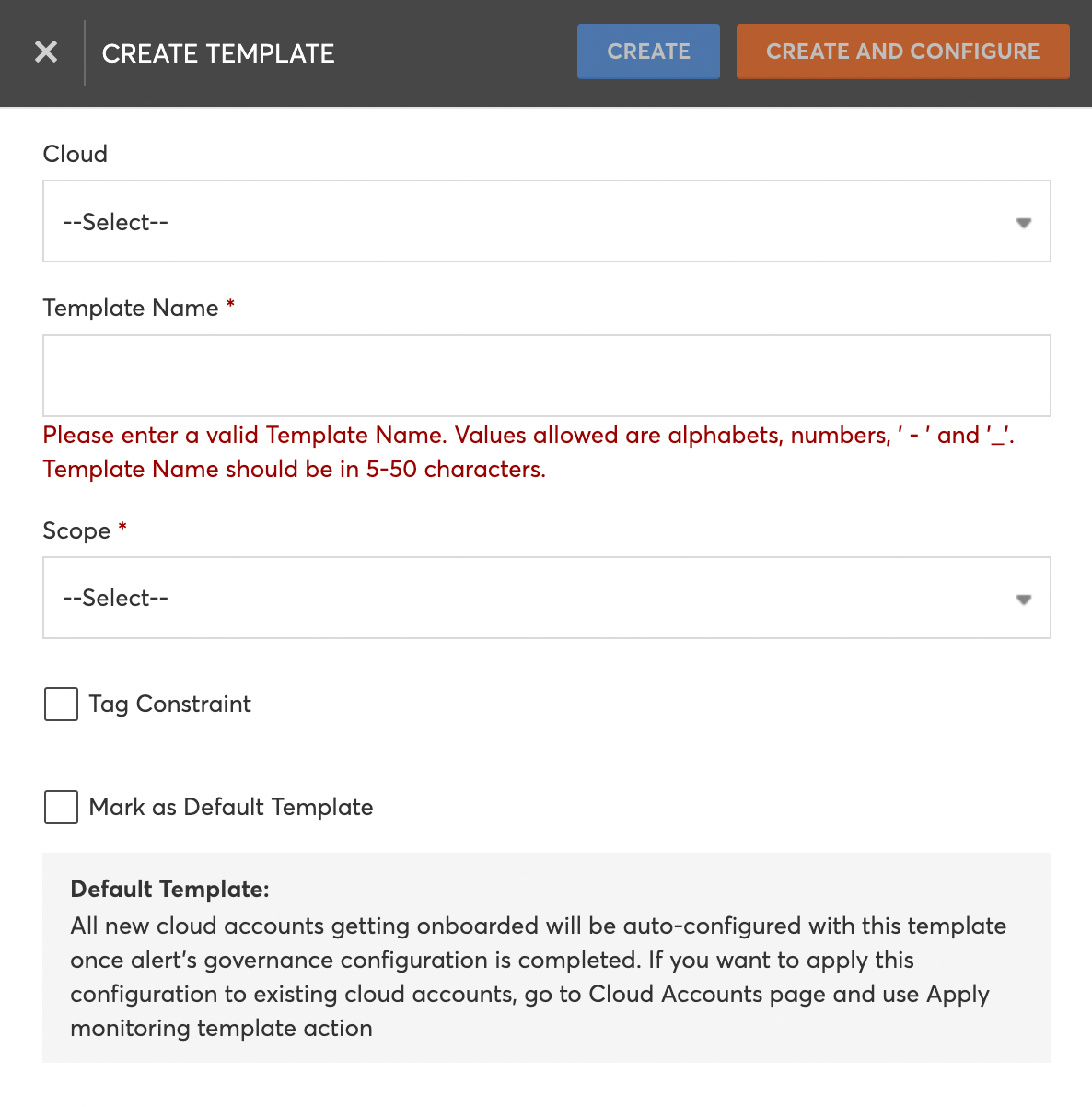
The following information needs to be entered to create a new monitoring template
| Field | Description |
|---|---|
| Cloud | Select the required cloud provider from the Cloud dropdown list. |
| Template Name | Enter a name to identify the template |
| Scope | Select the scope for which the template would apply. |
| Tag Constraint | This field is selected to have the template applied to a selected tag. If this option is selected the following information would need to be added. a. Tag Key: Specify the tag key to which the template needs to be applied. b. Tag Value: Specify the tag value to which the template needs to be applied. |
- The “Mark as Default” option when checked will consider the created template as the default template which would be applied when a new account is on-boarded.
- Click on “Create” option to create the new Monitoring template.
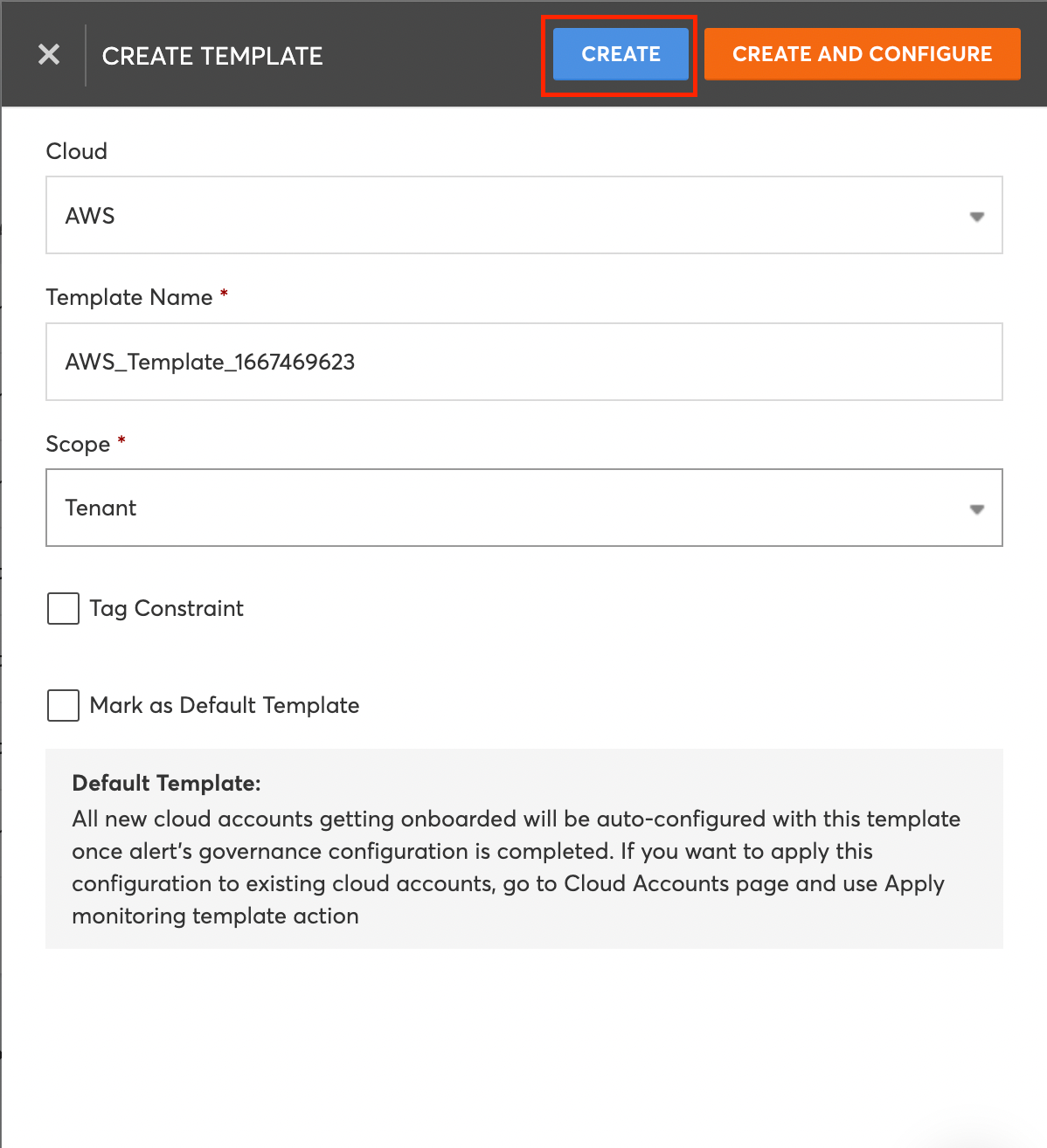
- Click on “Create and Configure” to create the template and to land on the page to configure the alerts.
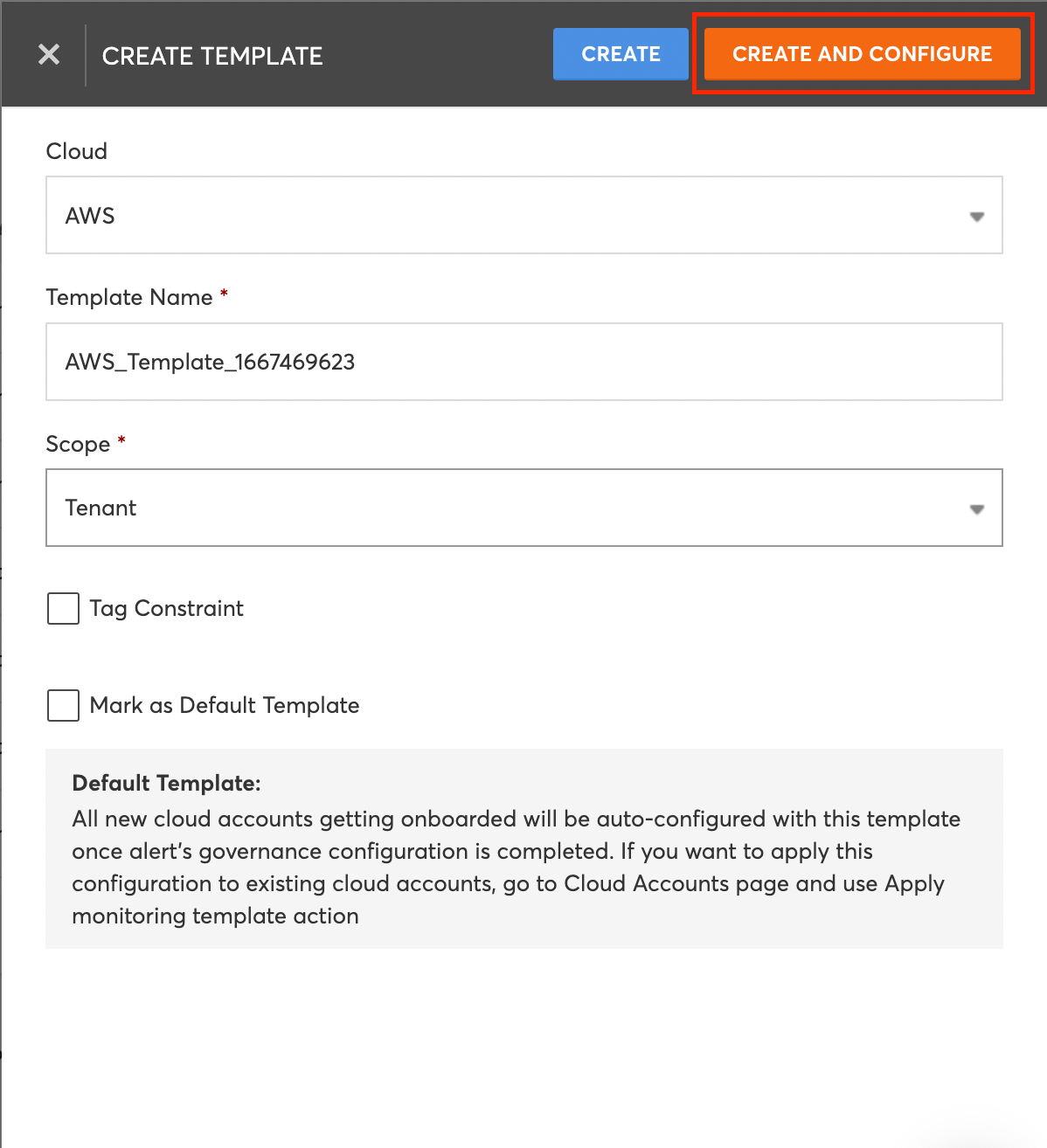
- Alerts can be configured for different categories as shown in the below image.
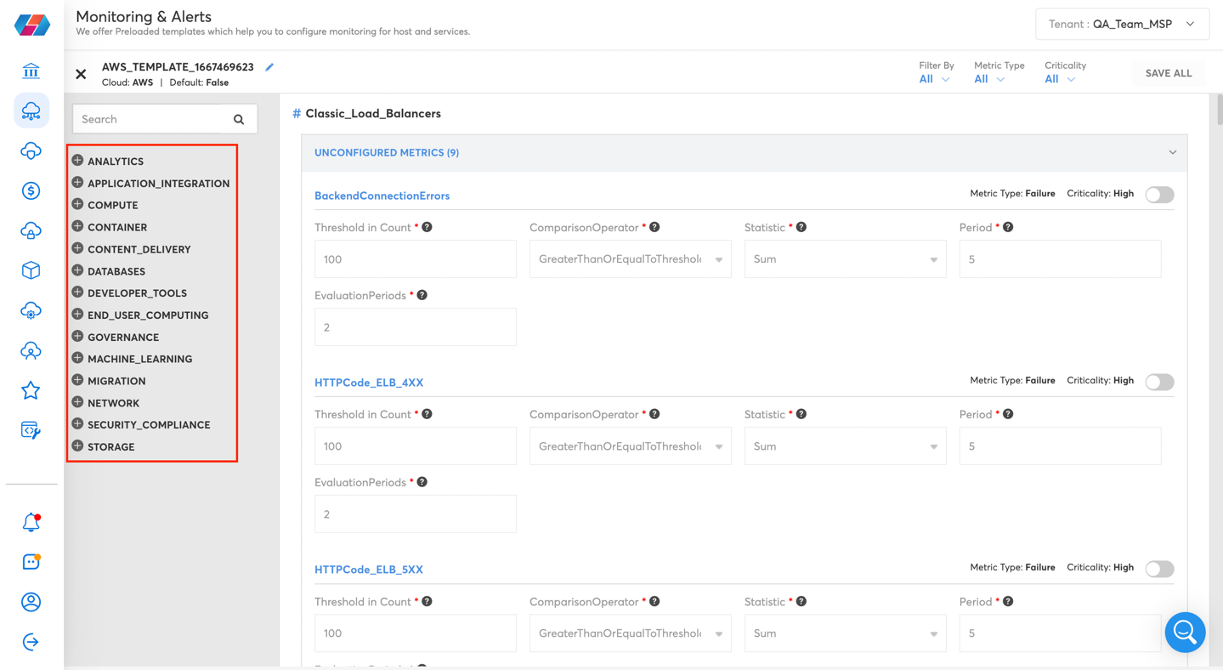
- The required alert can be enabled and configured by switching the toggle switch.
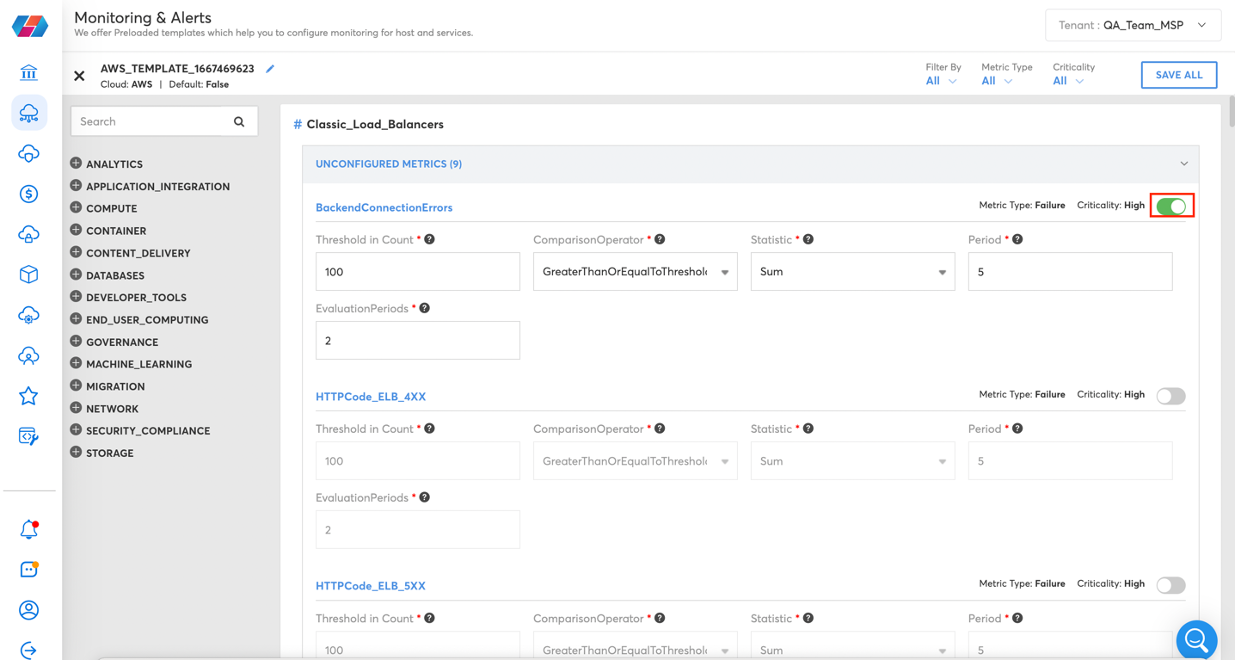
- After the required alerts are enabled and configured, click on “Save All” to save the alerts to the template created.
Cloning a Monitoring Template
An already created template can be cloned to create a new template with the customised configuration.
To clone a template the following steps needs to be followed.
- Click on the “View” option and then click on the “Clone” option.

- Enter the name of the cloned template and update the scope, select the “Tag Constraint”, ”Mark as Default Template” if required.
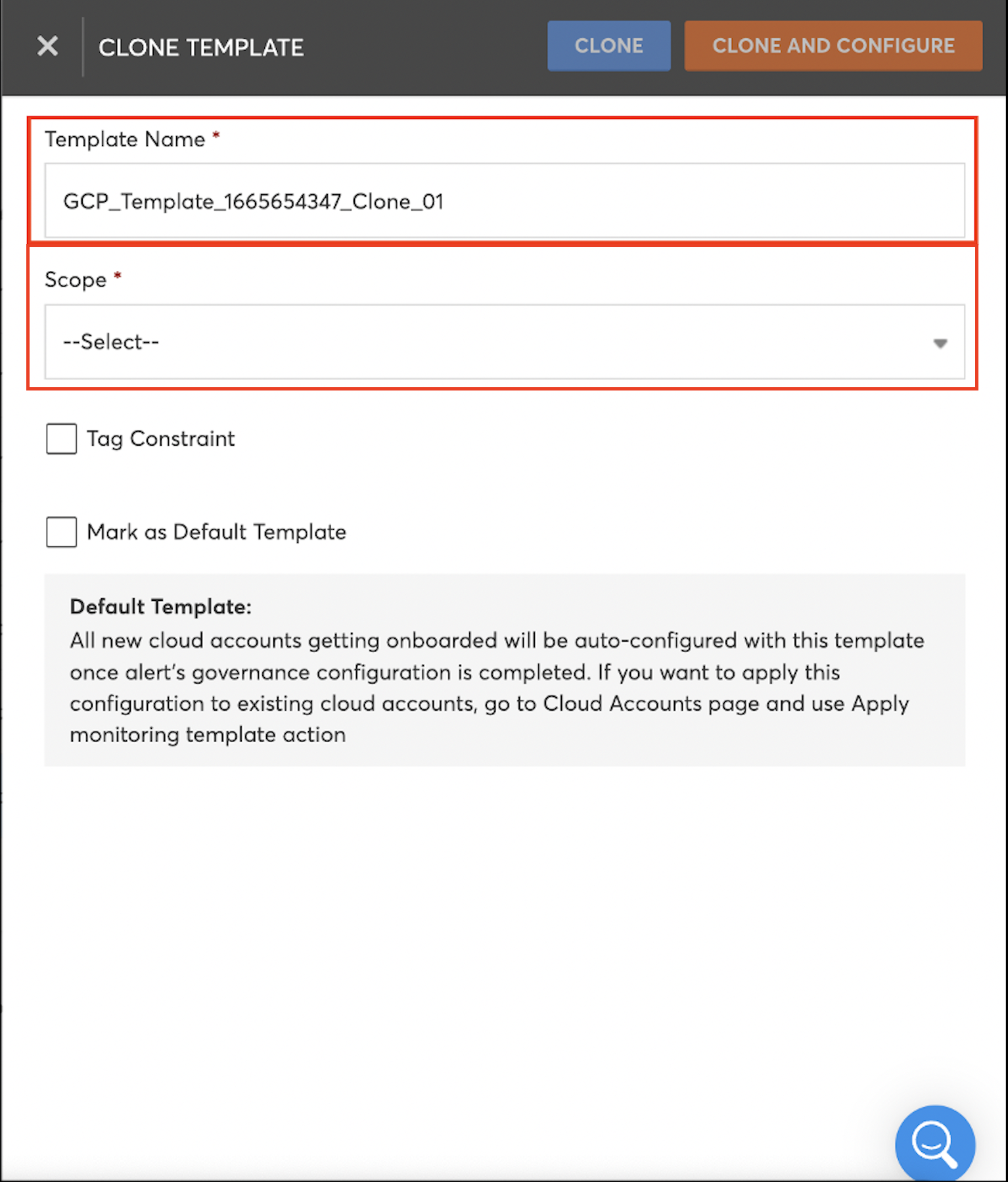
Note: Detailed explanation of “ Tag Constraint” and “ Mark as Default Template” is explained in “Creating a Monitoring Template” section.
- Click on “ Clone” to create the new cloned template.
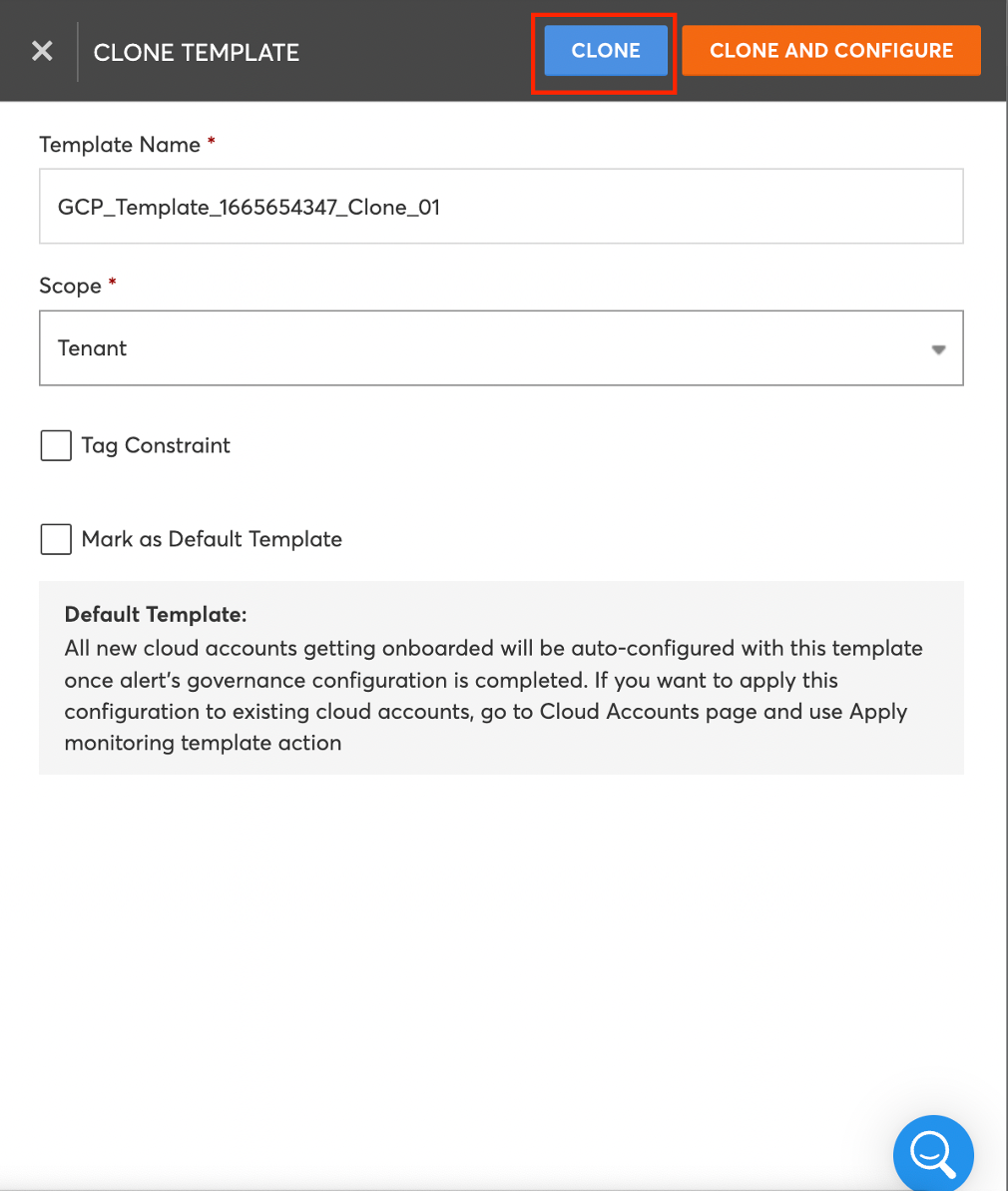
- Click on “Clone and Configure” to create the clone template and configure the custom alert configurations.
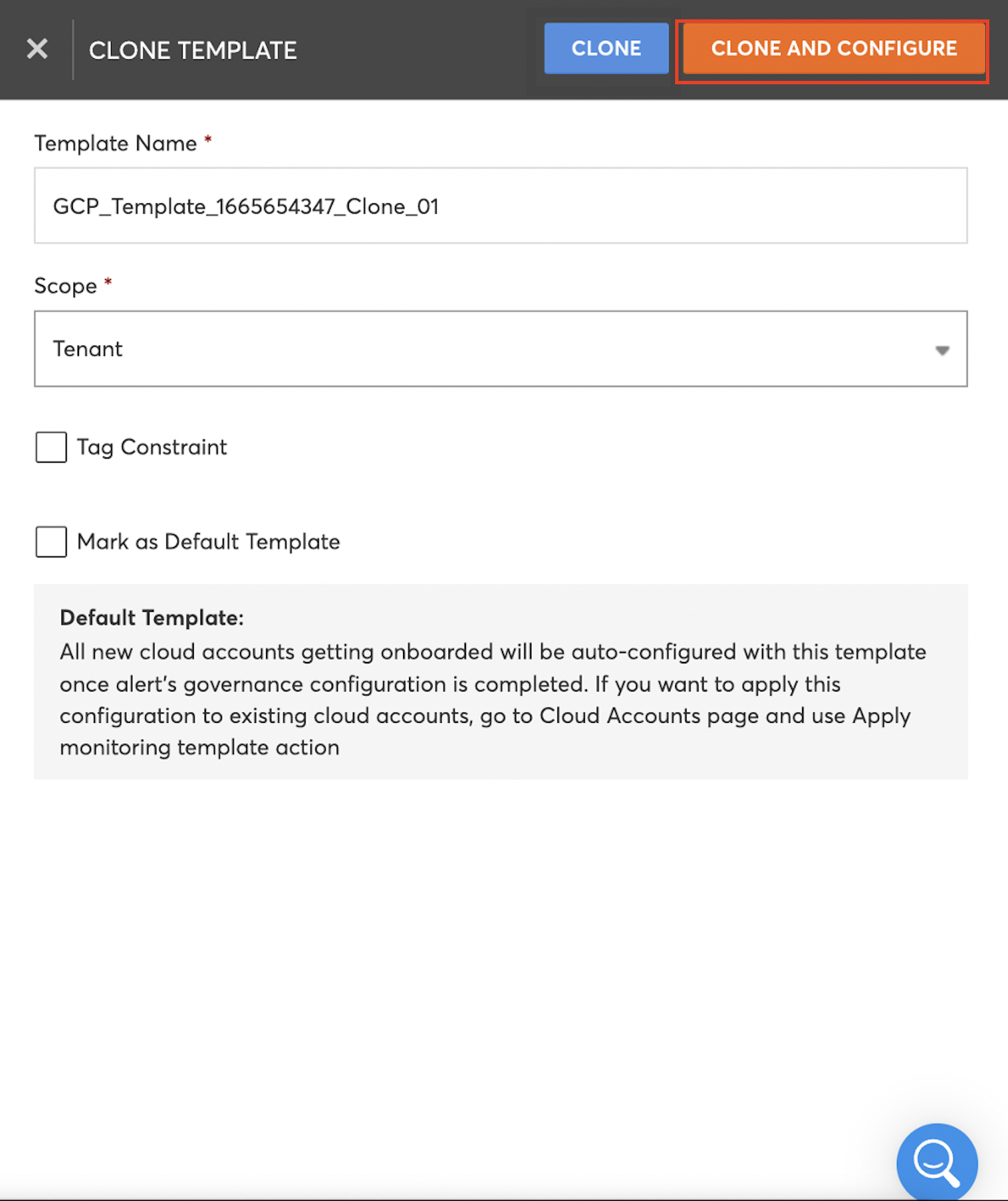
- Enable and configure the alerts by moving the toggle switch.
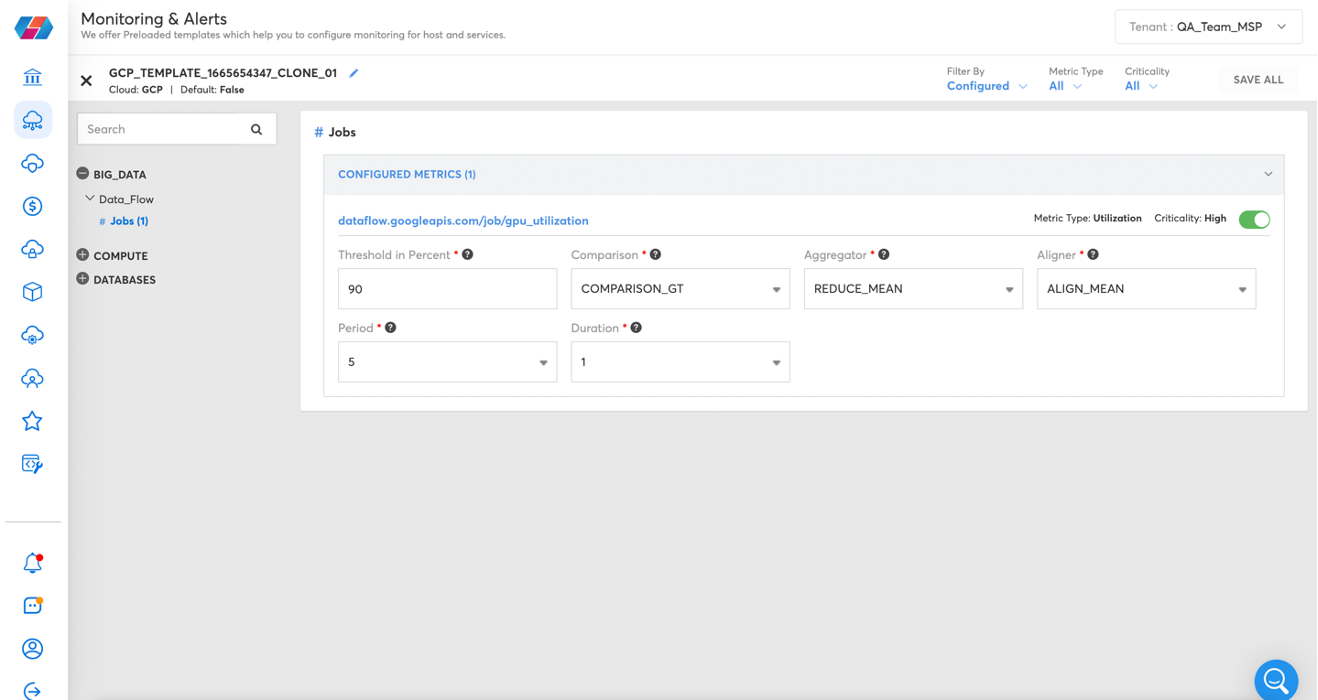
- After the alerts are enabled and configured, click on the “Save All” option to save the alert configuration.

Applying Monitoring Template to Cloud Accounts
The already created monitoring template can be assigned to a cloud account. In order to achieve this objective the following steps needs to be followed.
- Click on “Cloud Accounts” tab as shown below.
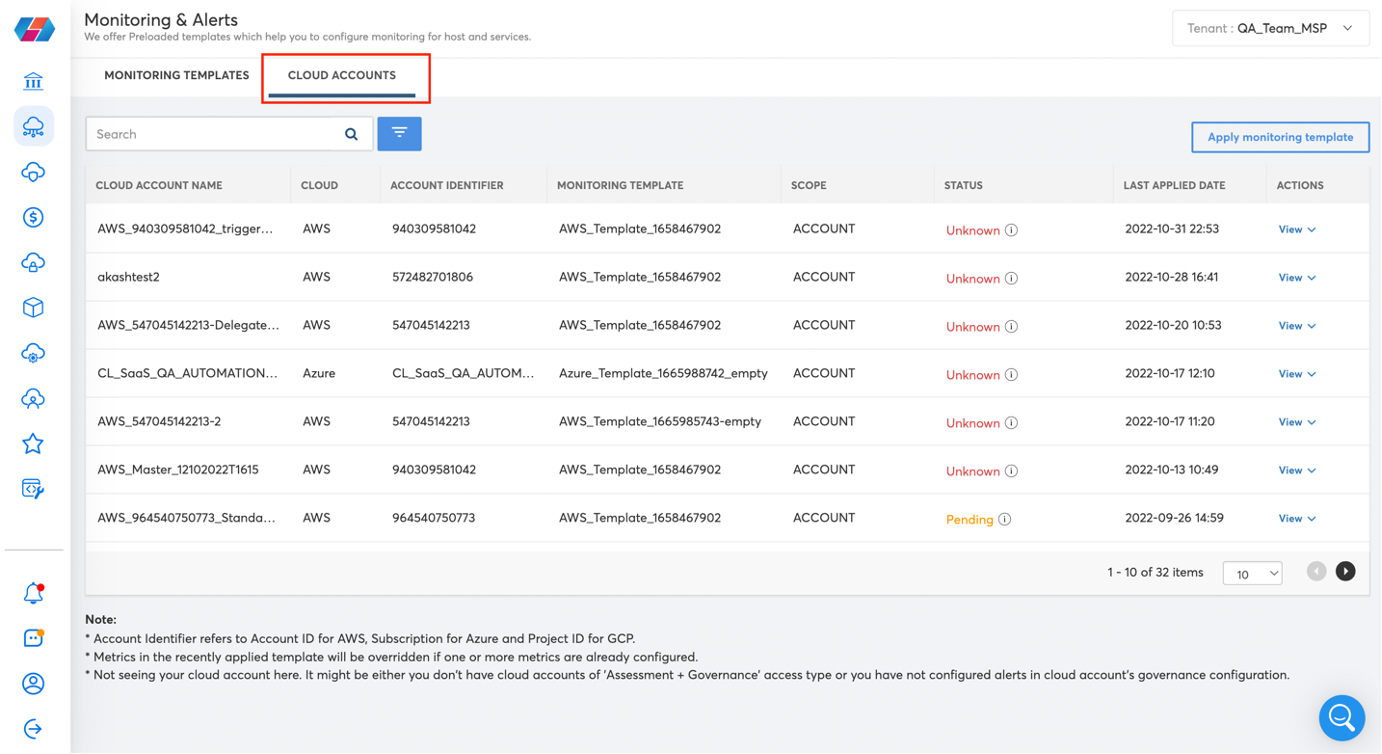
- Select “ Apply monitoring template”.
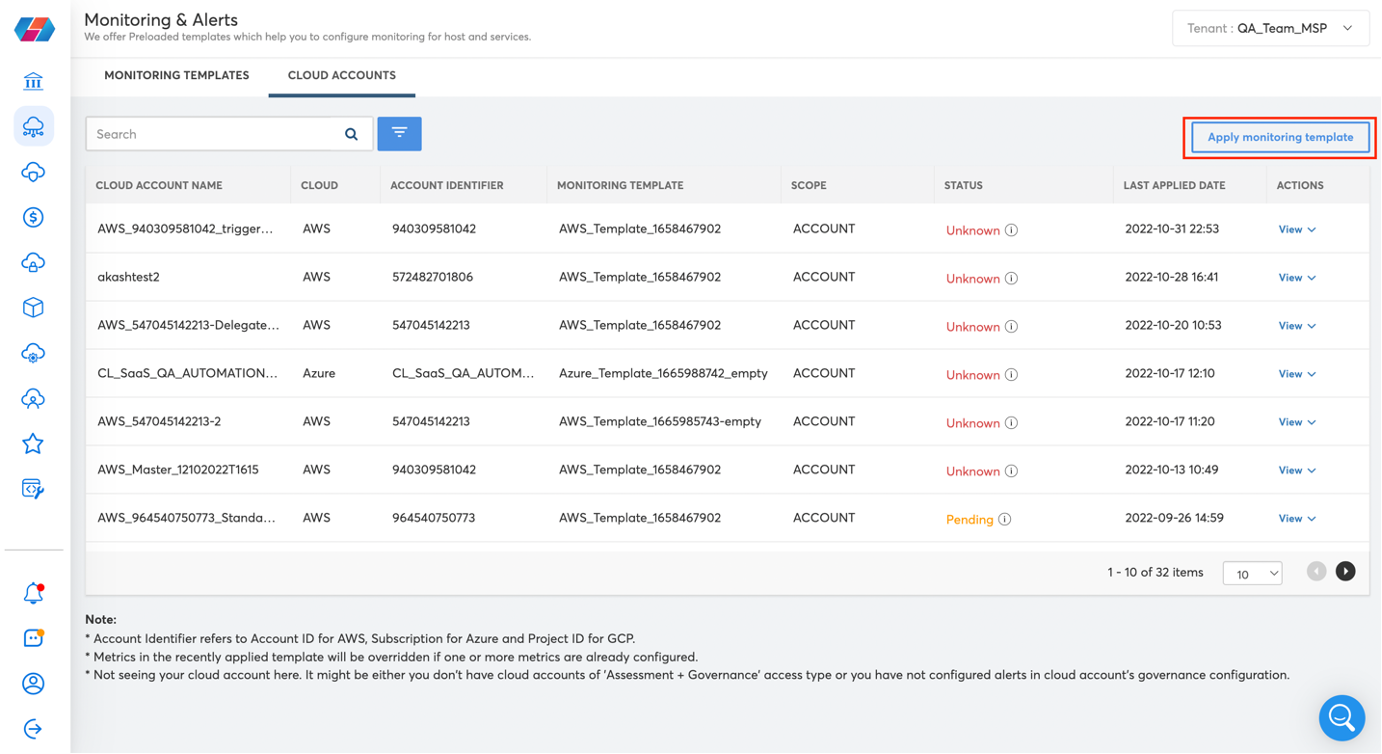
- After the “ Apply Monitoring Template” is clicked the below screen would be displayed and the necessary information will need to be entered.
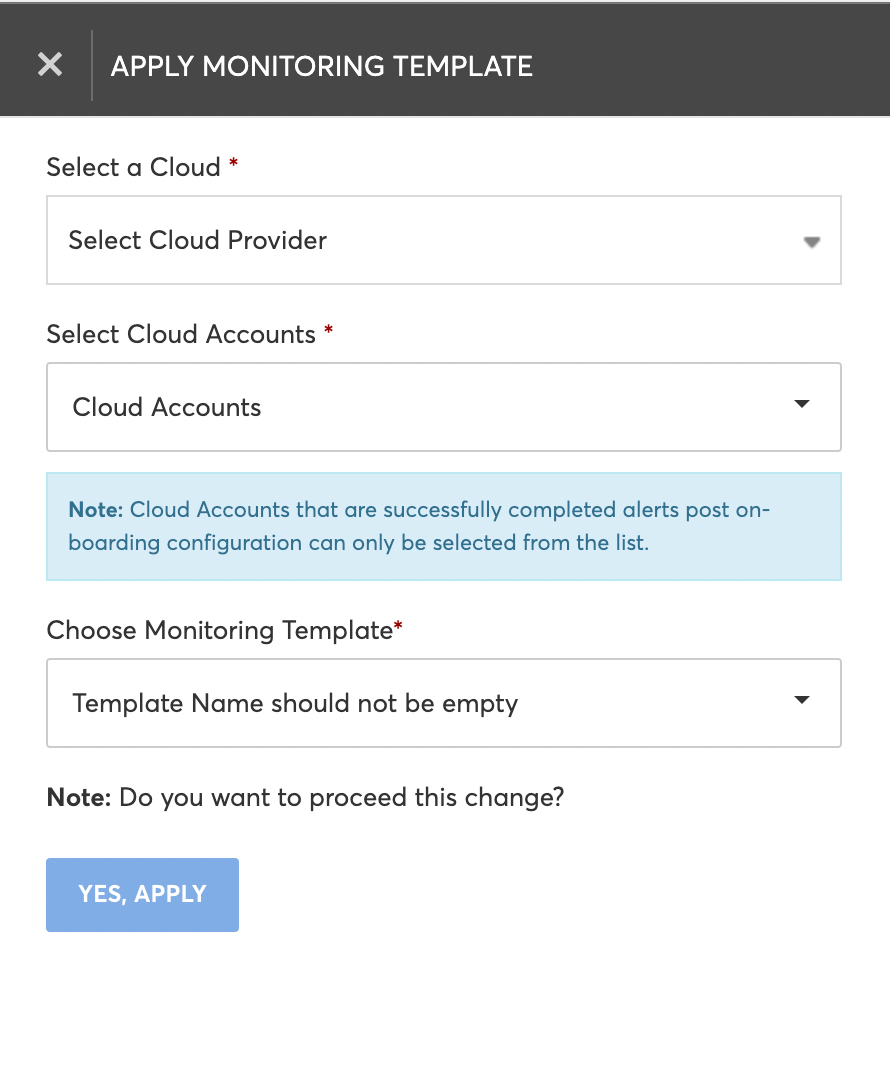
| Field | Description |
|---|---|
| Select a Cloud | Select the required Cloud provider from the drop-down list. |
| Select a Cloud account | Select the Cloud account to which the template needs to be added. |
| Choose Monitoring template | Select the monitoring template which needs to be assigned to the Cloud Account. |
- After the required information is entered, click on “ Yes, Apply” and the monitoring template will be added to the Cloud account.
Viewing Monitoring Alerts
You can view the monitoring alerts in the following places:
- Receive email alerts when the specified thresholds are exceeded
- Receive alerts on other applications configured using the webhook option under notification
- Operations Posture Dashboard lists the monitoring alerts that were activated and unresolved within the last 24 hours. You can view these at Tenant or Cloud Account level and drill down further to view more details
- Reports option in the Left navigation menu has the following reports in the Monitoring Analytics section. These reports provide a view of all monitoring alerts that happened in your cloud accounts for any selected time period. You can further slice and dice the data presented in these analytics reports and export as CSV file if required.
- AWS Monitoring Alerts
- Azure Monitoring Alerts
- Multi-Cloud Monitoring Alerts
Alarm Suppression and ITSM Suppression
In the CoreStack application, users can set up alarms for different scenarios. Users also have the functionality to suppress alarms for incidents.
Every alarm set up in CoreStack triggers alerts, and those alert instances are logged in an ITSM tool. All incidents are sent to users as notifications through emails and ITSM tickets integrated with CoreStack, so users can take further actions to resolve any issues. For instances where alarms need to be suppressed, users can select a particular alarm or select a group of alarms and suppress them.
Suppressing the alarm will suppress alerts and will also suppress the creation of incident tickets in the ITSM tool. An alarm that is suppressed can be activated later.
Perform the following steps to suppress alarms:
- Access the CoreStack application and go to Resource > Inventory.
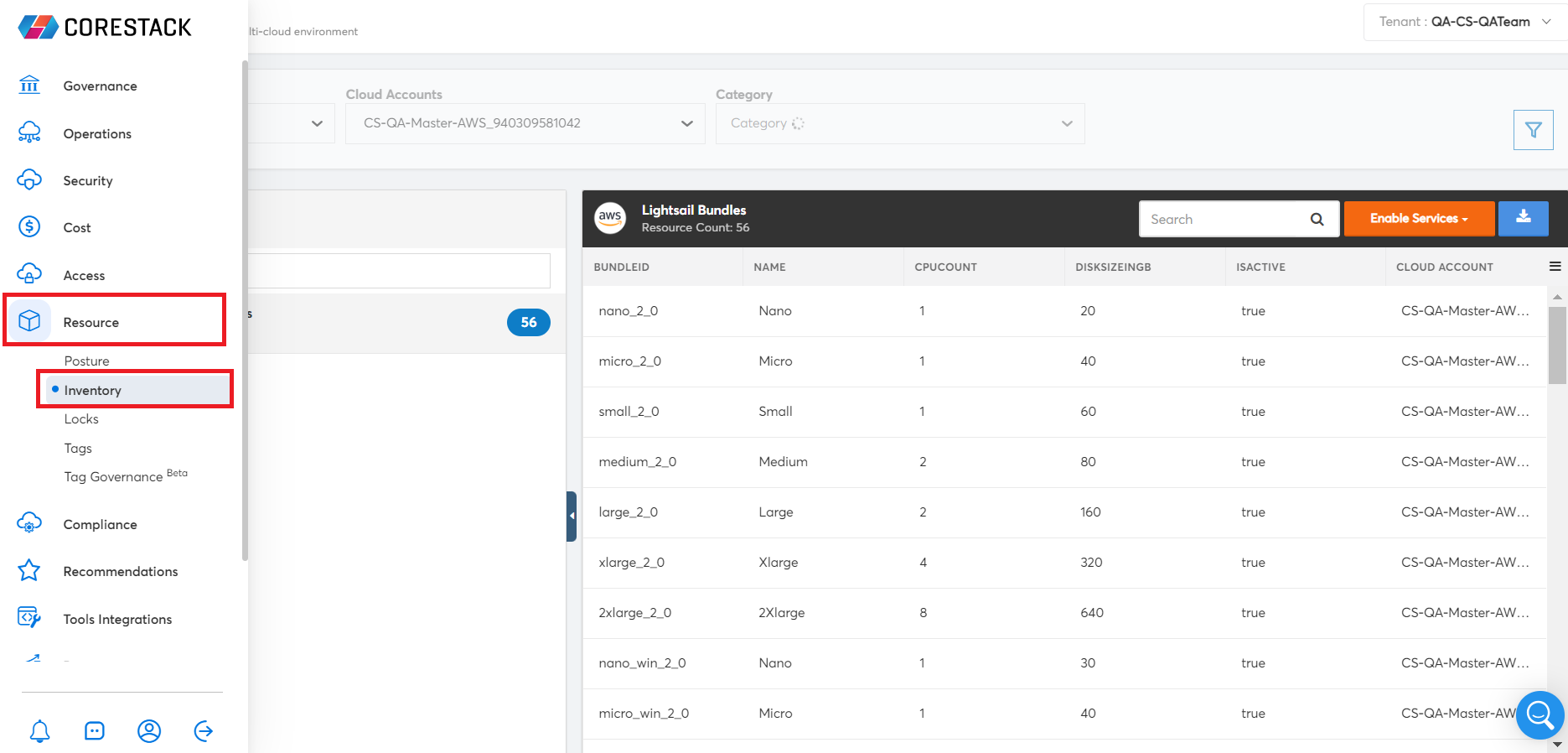
-
In the Cloud Services list, click to select AWS and click Apply, if not selected already.
-
In the Category list, click to select Governance, and click Apply.

- On the left pane, click to select Alarm Configurations.

- Click the bell symbol and then click Disable(50).
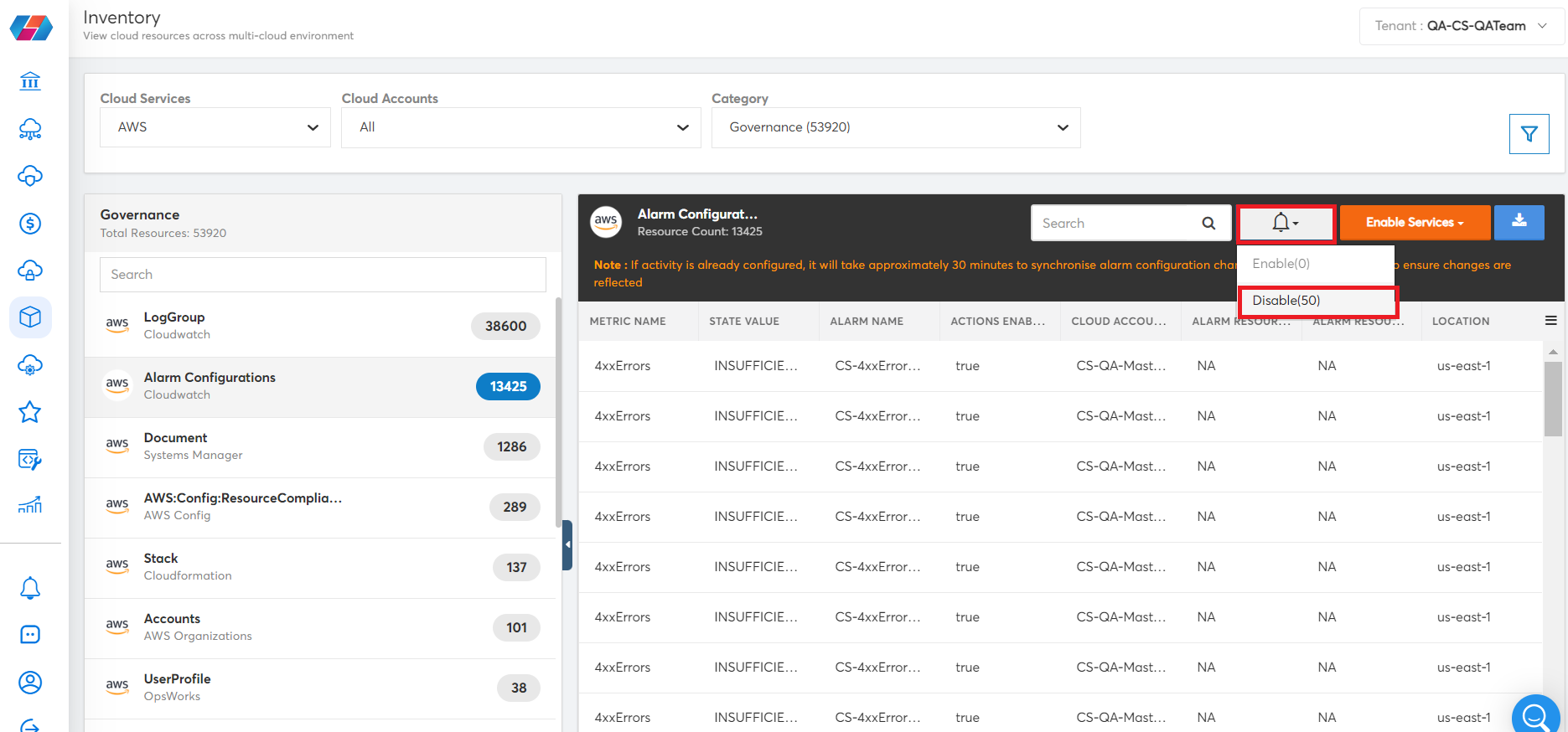
The Disable Alarm configurations dialog box appears.
- Fill the following fields in the dialog box and click Disable.
- In the Region list, click to select a region and click Apply.
- In the Alarm Configurations list, click to select the alarms that need to be suppressed and click Apply. You can choose the Select All option from the list to suppress all alarms in the list.
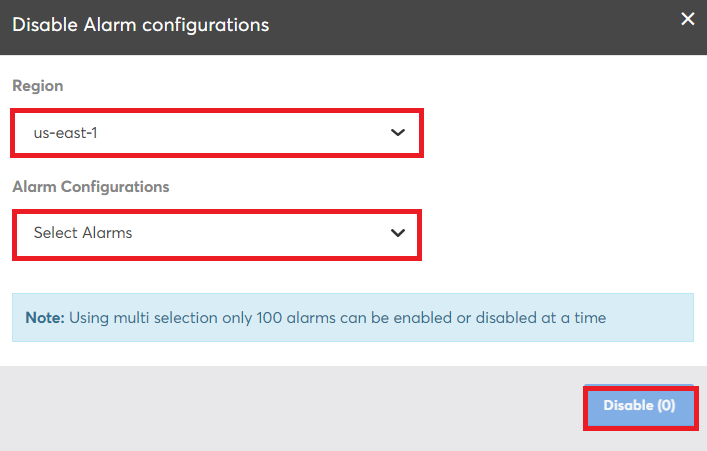
This configuration suppresses the selected alarms. Note that only 100 alarms can be suppressed at a time.
- Click the arrow at the bottom-right corner of the screen to navigate to the next page and view the next 50 alarms.
- Follow the above steps to suppress all relevant alarms.
Users can also click an alarm and in the ACTIONS list, select Disable Alarm Actions to disable or suppress the selected alarm.
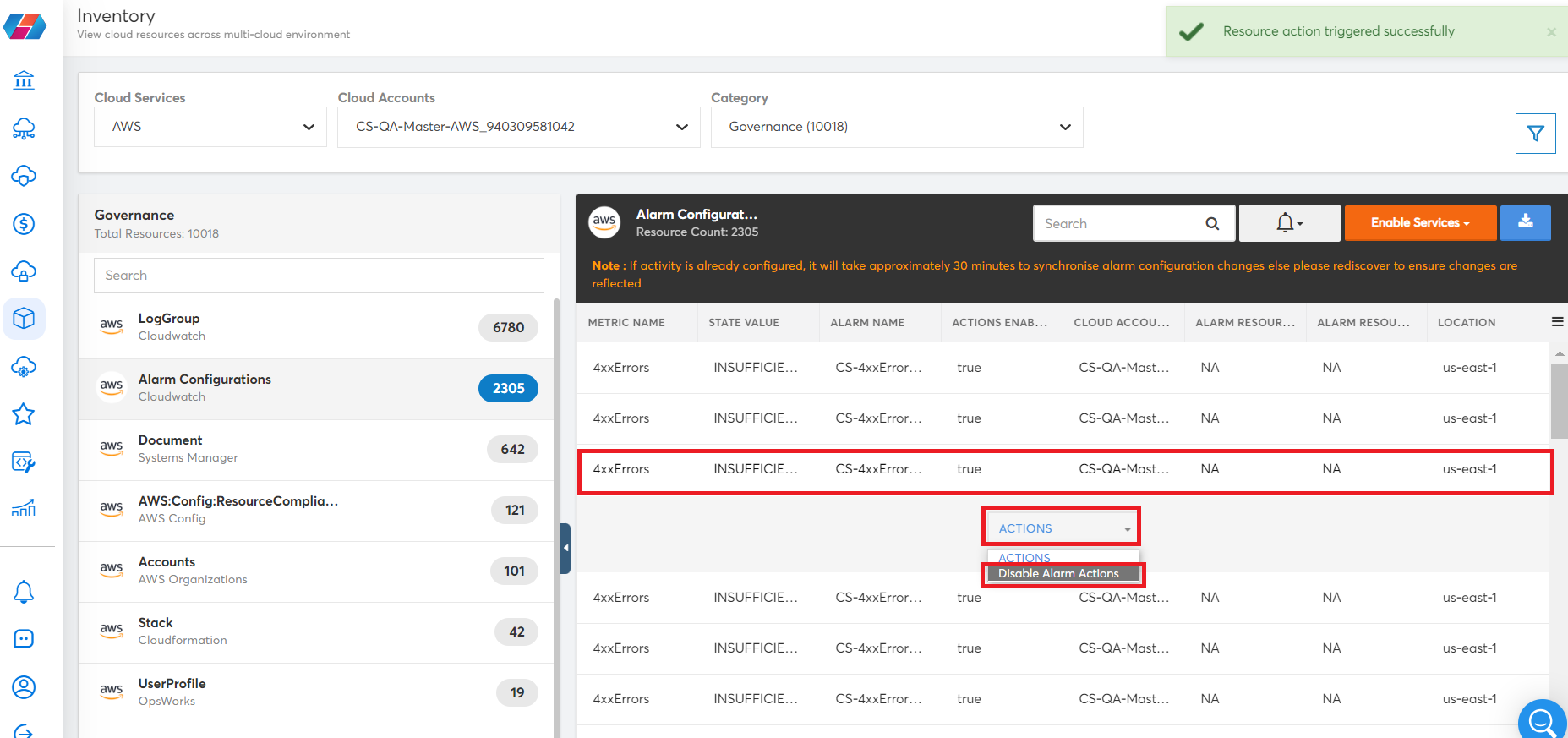
Note:
It will take approximately 30 minutes for alarm configuration changes to synchronize and be reflected in the system.
Updated 9 months ago